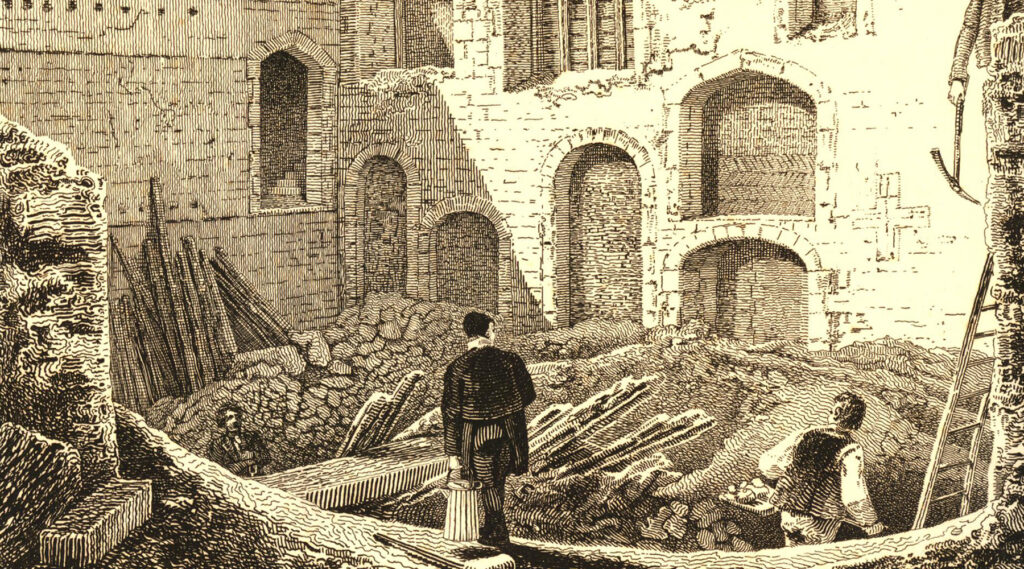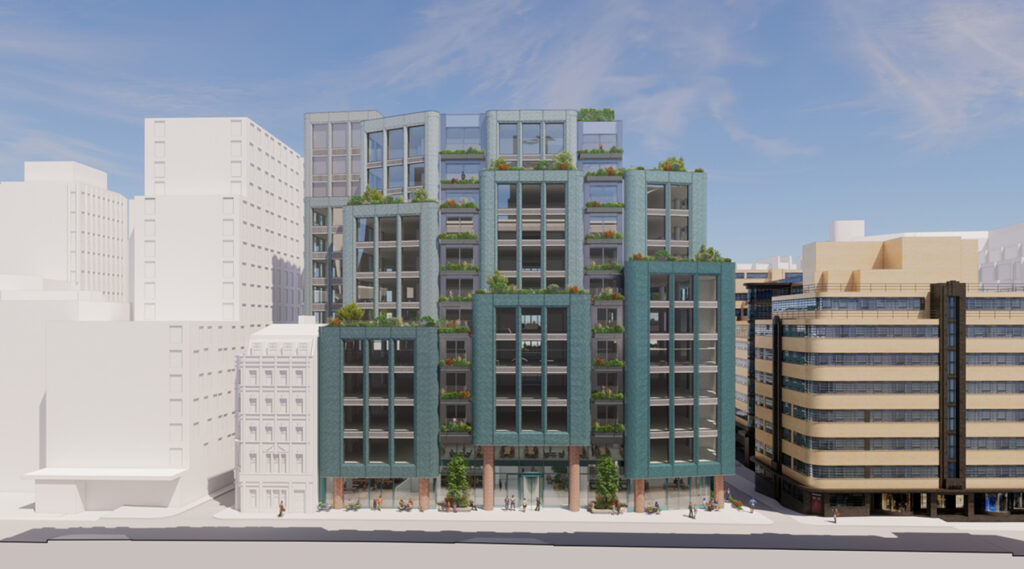Archaeological remains from the medieval Abbey of St Clare could be displayed in a new permanent museum space as part of a redevelopment of the post-war office block on the site.
The Minoresses Abbey of St Clare Franciscan was a monastery founded in the 13th century just outside the Roman Wall surrounding the City of London, just north of the Tower of London.
The monastery was part of the Franciscan Order, and just as the men adopted the Latin term fratres minores (“lesser brothers”) to show their humility, the nuns were known as sorores minores (“lesser sisters”), which in medieval England was as “minoresses”.
It’s from the minoresses that this part of London gets its name – Minories.
The monastery fell victim to the Dissolution of the Monasteries under King Henry VIII. The land around was developed, and surviving monastery buildings were used variously by Bishops and Lords, and at one point, the Tower of London officers. The few surviving buildings were finally destroyed by fire in 1797.

Extract from “View of the ruins of the convent of St Clare or Minoresses” – Smith’s Ancient Topography of London. 1812
The building on the site today, officially called St. Clare House, dates from the mid 1950s and exists because the second Great Fire of London – the WWII blitz that cleared the site. That building is now to be demolished in turn, and a larger office block will be erected on the site. PLP Architects have designed the new office block, which will feature a stepped back design with rows of roof terraces for the office occupants to use.
However, around the side is a solitary survivor of the blitz — a former Victorian warehouse building, which is to be refurbished as a community centre as part of the conditions attached to the office block next door. The warehouse building, known as ‘Writers’ House’ will include an archaeological and cultural centre at its ground floor levels, equipped with new retail space and with affordable workspace provided above.
Remains of the monastery are known to survive within the Writers’ House and are predicted to be uncovered during construction. The site also encompasses the eastern Roman cemetery, which may have rich archaeological potential. Hopes of finding something are high because in 2013, a spectacular Roman stone sculpture of an eagle was found nearby, presumably from a tomb. That sculpture will form part of the future Roman gallery in the new London Museum when it opens in 2026.
There will probably also be remains of post-medieval buildings in the ground, which may give new insights into how the former abbey buildings were adapted in the 16th and 17th centuries, which is a topic that’s not really that well understood in the City at the moment.
When the Writers House opens, appropriate artefacts will be displayed in a new space inside the building, which will be free to visit whenever the cultural centre is open – which is expected to be most days of the week.
It’s not going to be a big museum, more likely a few glass cabinets and some interpretation boards, but London will undeniably be getting a new museum.








If they find the floor levels of each era, I would love it if they had them on display under a glass floor in the new ‘writers house’. I’m sure there’s something like this already in London – but can’t for the life of me think where – perhaps in Leadenhall Market (inside a barber’s shop I think) and I was pretty sure in Southwark cathedral soewhere – or at least a London church.